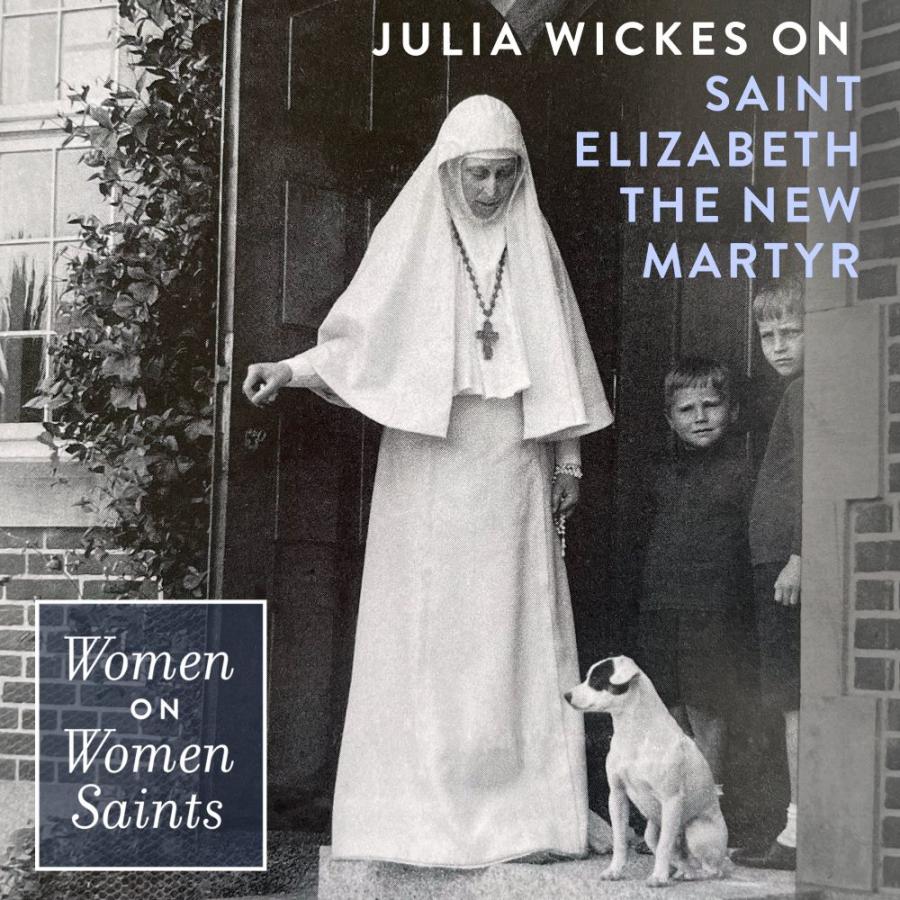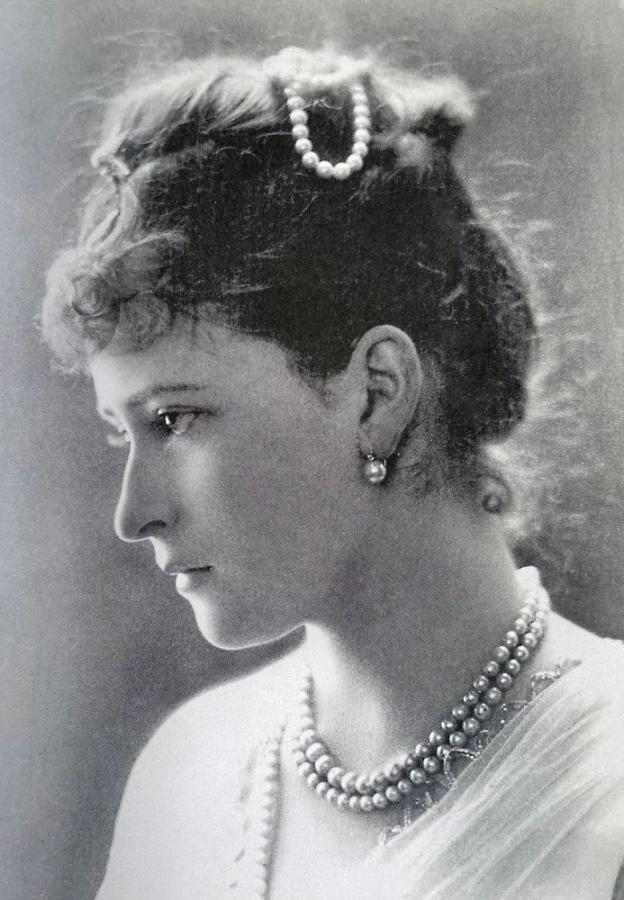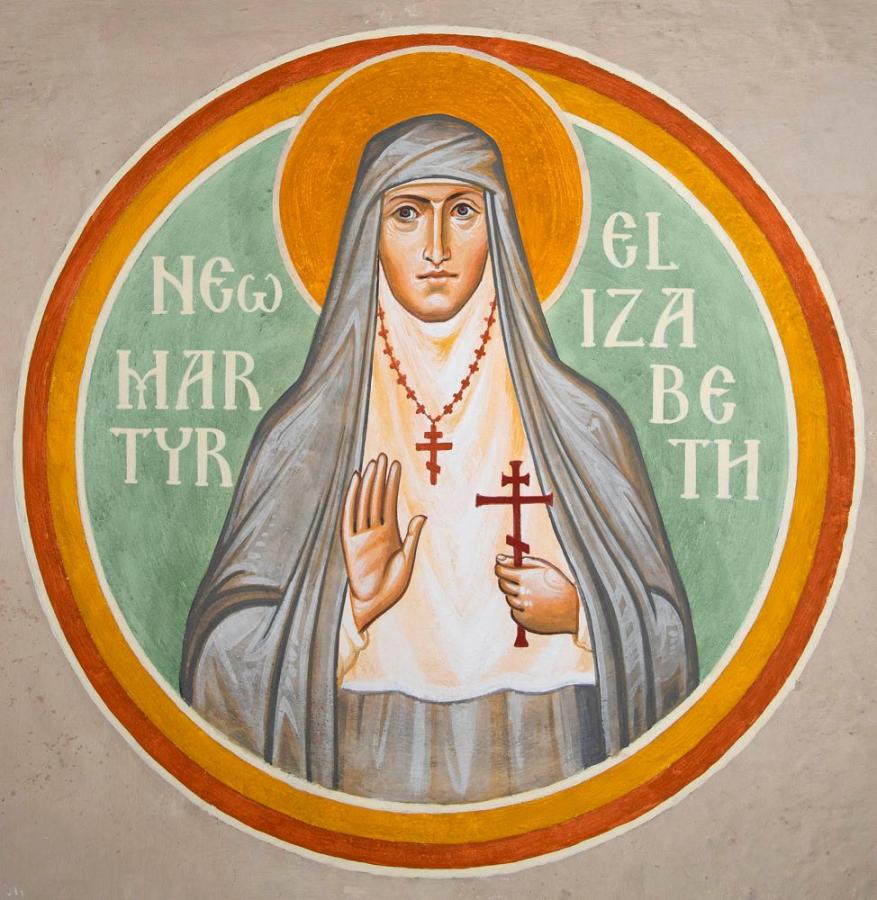
Periodically, I pick up my copy of the biography of St. Elizabeth the New Martyr, written by Lubov Millar, and re-read certain parts. Photographs, anecdotes from people who knew her, and letters written by Elizabeth all provide a level of detail that is unusual within the genre of Orthodox hagiography. While I love having such an extravagant window into the life of an Orthodox saint, I also have found it interesting that the spiritual process of cultivating communion with a saint, whether modern or ancient, seems to happen apart from the noise of biographical detail. Over time, Elizabeth’s witness has taken on a simple shape in my heart and consciousness, more akin to a poem or literary vignette, complete with its own symbolism, parallelism, and paradox.
Most Orthodox Christians are likely familiar with the life story of the Grand Duchess Elizabeth of Russia. Elizabeth was a German princess and granddaughter of Queen Victoria who married the Grand Duke Sergei of Russia. Her life reads almost like a fairy tale with a dystopian ending. Elizabeth was raised Lutheran, but converted to the Orthodox Church in spite of the disapproval of her Protestant family. She was made a widow when her husband was assassinated in the midst of the deteriorating political situation in Russia that culminated in revolution. She sold her jewels and leveraged her worldly status to establish Sts. Mary and Martha Convent in Moscow, a monastery that was unique within that context of Orthodox tradition at the time because it combined both prayer and social work, boasting a school, hospital, orphanage, and home for the elderly.
As her work as abbess created a thriving bubble of order and beauty within the walls of the convent, the world outside of its walls was one of turmoil, anger, and chaos. Elizabeth knew that it was only a matter of time before she would be personally targeted by revolutionaries. As a member of the aristocracy, she had the means and opportunity to flee, but chose to stay at the Mary and Martha Convent out of a commitment to her role as abbess, and a genuine love for the people of her adopted country.
The parallelism that emerges in Elizabeth’s life, for me at least, might be expressed by two pivotal train journeys that she took at two radically divergent junctures. I’ll start with the end of her life and move backwards. When communists arrested Elizabeth (this took place, according to Millar, on the third day of Pascha in 1918), she and the Nun Barbara (who had been her cell-attendant at the monastery and would not leave her side) were put on a train that took them into exile in Perm. This train journey, motivated by intolerance and targeted hate, was a death sentence for them both. It was put into motion by an emerging political system that she, like so many, was powerless to resist.
I cannot help but note, with pathos, how this final journey toward martyrdom contrasts with the journey that brought Elizabeth to Russia as a young, beautiful, celebrated, and popular bride-to-be. Millar describes it in this way:
“A lavish welcoming extravaganza…was prepared. Elizabeth’s future husband, knowing her love of white flowers, had all the railway coaches decorated with sweet-smelling white flowers. At each station where the train stopped, crowds of people…came out to welcome her. Everyone admired her beauty, grace and charm.”
A superficial reading of Elizabeth’s life—bookended by these two wildly different train journeys—might mistakenly take her to be a privileged but ultimately unlucky pawn of history. She was a proper, well-behaved woman of royal birth who got burned by the swinging pendulum of populist, mob-driven love and hate. As a historical figure, Elizabeth’s life doesn’t seem to offer the kind of juicy morsel of girl power that our contemporary minds recognize.


But the Orthodox Church sees something quite different going on here. Even while being borne along by trains that were arranged for her by people who held greater worldly power, Elizabeth’s heart and mind—her own motivations and the trajectory of her will—were always her own, and always with the Lord. Internally, Elizabeth possessed clarity, strength of will, sanity, and a level of spiritual maturity that is rare and worthy of our attention. For one thing, she did not allow herself to be consumed by hate for her enemies (in fact, she brought public criticism upon herself by visiting her husband’s assassin in prison before he was executed), and she bore all of the turbulence of her time with patient serenity, staying focused, calm, and emotionally regulated enough to create a functional institution that met the real needs of many vulnerable people. She built order and created beauty during a time of disorder, ugliness, and distraction.
This brings up one last thing I would like to point out about Elizabeth. She worked hard at the end of her life to build what, in modern terms, could be considered a successful nonprofit organization. She did not live to see its demise, but ultimately the beautiful and functional institution she had created slowly fell apart after her departure; the nuns of the community were eventually scattered. According to Millar, under communism, the convent was converted into a movie theater in which the “frescoes were covered over, and an enormous statue of Stalin was erected in the place of the altar table,” and “the vestry…turned into public toilets.”
Elizabeth was not naive. I think she knew very well that she was working to create an institution that was essentially at odds with emerging forces that had the power to tear down everything that she was building. The fact that she was able to engage effectively in the work of institution building, so to speak, under these circumstances makes her an incredible example to all of us who do similar work.
The Lord allows so many inexplicable and even devestating things to happen in this world. He allows good things to be built, and then torn down. He allows our hard work to be taken away from us, and given into the hands of others. God works through us, and He works through institutions, but ultimately, He deals with us as individuals apart from institutions. He loves us, and when we idolize our own work, or get caught up in infatuation with some idea of saving the world, He may take it away from us, out of love, to bring us back to Himself. All of this is hard to understand, but I think Elizabeth serves as a strong example of how we are called to embrace our place in this world and go about our work for the benefit of others, without possessing it too closely, or obsessing and despairing about outcomes. Elizabeth’s ability to build an institution that was indeed good, but then serenely walk away from it toward her martyrdom, singing hymns of praise, is a powerful icon of holiness that we can hold in our hearts as we work, strive to love God, and move through our own turbulent times.
Julia Wickes lives in South Bend, Indiana, where she is director of communications for Trinity School at Greenlawn, mother to two teen girls, owner of a miniature poodle named Ramona, and wife of a Syriac scholar and Notre Dame professor. She has always loved sewing, but more recently has directed her attention toward acquiring power tools and building simple but practical things with wood. She holds a master of arts in theology from St. Vladimir's Orthodox Theological Seminary.



